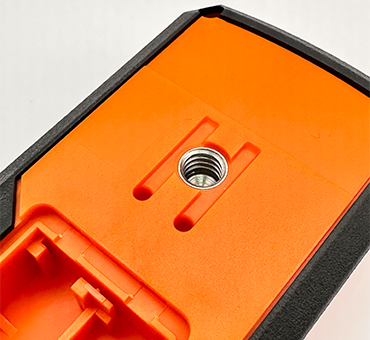What Is the Principle of Double Shot Molding?
Like general injection molding, Double Shot molding requires the material to be melted at a high temperature in the filling tank, and then injected into the mold through the internal screw for shaping. The feature of two Double Shot molding is that it can produce two different materials at one time. The common technology is to inject a relatively hard rubber or plastic housing first, and then move it to another mold immediately, and inject a soft elastomer to coat it, which is called two shot molding. The steps sound simple, but it is not easy to complete. It needs to be equipped with a dedicated machine and more complex molds to achieve. Although the initial investment cost of Double Shot injection molding is higher than that of injection molding, the benefits and features of two shot molding can bring greater profits to the market.
What Kind of Products Need Double Shot Injection Molding?
When to Use Double Shot Injection Molding?
Double Shot injection molding, also known as dual-shot, multi-shot, or two-shot molding, is a process that combines two different materials or colors within a single injection molding cycle. This technique is used to produce complex parts with multiple components or features in a more efficient and cost-effective manner. Here are some situations and products where two-shot injection molding is commonly employed:
Multi-material Components
- Soft-touch grips or handles: Two-shot molding is often used to combine a rigid plastic with a softer material for improved ergonomics and comfort.
- Seals and gaskets: Components requiring a combination of materials for enhanced sealing properties.
Multi-color Parts
- Consumer products: Items like electronic devices, toys, and household goods that require colorful designs without the need for additional assembly steps.
- Automotive interiors: Two-shot molding can be used for creating visually appealing and durable interior components with different colors.
Functional Integration
- Overmolding electronic components: Integration of soft materials around sensitive electronics for protection and improved aesthetics.
- Medical devices: Creating products with both rigid and soft components for comfort and functionality.
Reduced Assembly Steps
- Tool handles and grips: Combining different materials in a single molding cycle eliminates the need for secondary assembly steps.
Improved Aesthetics
- Personal care products: Creating products with a combination of transparent and opaque materials for a unique visual appearance.
Cost Reduction
- Elimination of secondary processes: Two-shot molding can reduce the need for additional assembly or bonding processes, leading to cost savings.
Increased Durability
- Tools and equipment handles: Combining hard and soft materials for improved grip and durability.
Enhanced Product Performance
- Automotive components: Creating parts with a combination of rigid and flexible materials for improved performance and safety.
When considering double shot injection molding, it's essential to evaluate the specific requirements of the product in terms of material properties, aesthetics, functionality, and cost. This process can offer advantages in terms of efficiency and product quality, but it requires specialized equipment and expertise in mold design and injection molding processes.
Double shot molding is one of the injection methods. Although the initial investment is relatively high and requires more mold professionals than ordinary injection to design high-quality products, it is the most affordable choice for composite materials in terms of long-term investment. Regardless of the injection method, a rigorous process is required. Raw material control, mold design, injection monitoring, and quality inspection are closely linked to each other. If there is no consistent standard, time and money will be lost.


